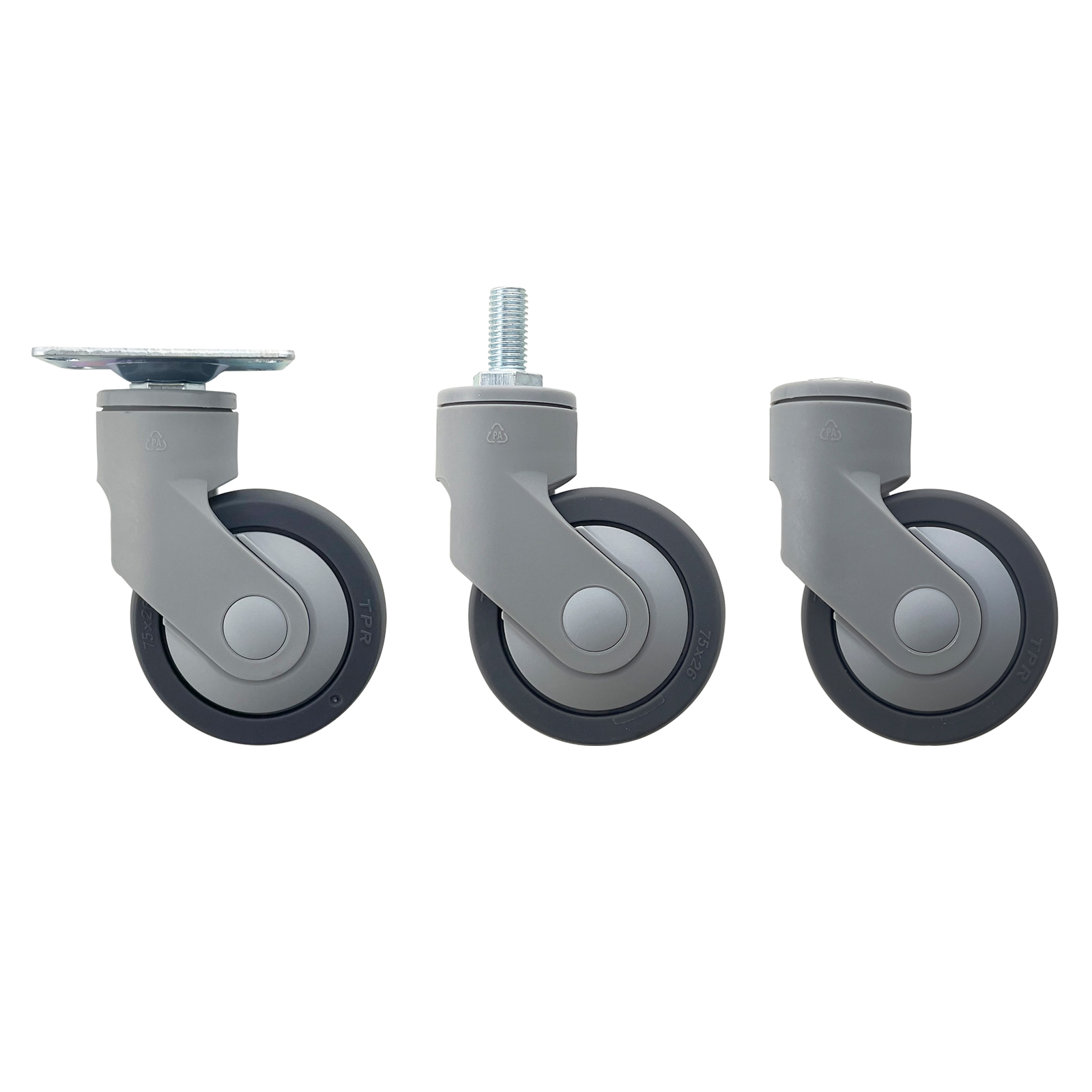When planning a mobile equipment setup, choosing the right type of caster wheel is critical. Whether you're working on an industrial cart, medical equipment, furniture, or heavy-duty machinery, the decision between rigid casters and swivel casters can significantly impact mobility, safety, and overall efficiency.
In this guide, we’ll compare rigid vs swivel casters, break down their features, and help you decide which option is best for your specific project needs.
What Are Casters?
Casters are wheel assemblies that attach to the bottom of equipment, allowing it to roll. They're essential in industries like warehousing, healthcare, logistics, manufacturing, and retail. Casters come in various forms, but the two most common types are:
Rigid casters (also known as fixed casters): These casters roll in a straight line and do not swivel or rotate.
Swivel casters: These feature a rotating mounting plate that allows 360-degree rotation, making it easier to turn or pivot the equipment.
Rigid Casters: Stability and Directional Control
Advantages of Rigid Casters
Straight-Line Movement: Rigid casters are perfect for applications where movement in one direction is required. They keep equipment moving in a predictable path, which is ideal for production lines or long hallways.
Increased Load Capacity: Due to their simple design and sturdy frame, rigid casters can often bear more weight compared to swivel casters of the same size.
Long-Lasting Durability: With fewer moving parts, rigid casters are more durable and require less maintenance. They hold up well in rough or high-impact environments.
Lower Cost: Generally more affordable than swivel casters, rigid casters offer excellent value for projects with limited maneuverability needs.
Common Applications for Rigid Casters
● Assembly line carts
● Heavy-duty machinery
● Industrial platforms
● Storage racks
● Flatbed trolleys
Swivel Casters: Flexibility and Easy Navigation
Advantages of Swivel Casters
360-Degree Rotation: Swivel casters allow movement in any direction, offering exceptional maneuverability—perfect for navigating tight spaces or making frequent turns.
Enhanced Operator Control: Swivel caster wheels reduce the need for heavy pushing or repositioning, making them ideal for use in ergonomically sensitive environments.
Versatility: These casters are suitable for a wide range of light to medium-duty applications where agility is important.
Common Applications for Swivel Casters
● Office chairs
● Hospital beds
● Service carts
● Rolling workstations
● Mobile retail displays
Rigid vs Swivel Casters: Key Differences
| Feature | Rigid Casters | Swivel Casters |
| Movement | Straight line only | 360° multidirectional |
| Maneuverability | Limited | High |
| Stability | High | Moderate |
| Load Capacity | Typically higher | Lower than rigid (same size) |
| Cost | Generally lower | Generally higher |
| Maintenance | Minimal | Moderate (needs lubrication) |
| Best for | Long paths, heavy loads | Tight spaces, frequent turning |
Why Use Both Rigid and Swivel Casters Together?
In many cases, the best caster configuration is a combination of both types. A common setup includes:
● Two swivel casters at the front
● Two rigid casters at the rear
This hybrid layout allows for easy turning and directional control, balancing mobility and stability—ideal for warehouse carts, tool cabinets, and transport trolleys.
How to Choose the Right Caster for Your Project?
Weight Requirements: Determine the total load and divide by the number of casters. Rigid casters often carry more weight, but heavy-duty swivel casters are available, too.
Floor Conditions: Choose caster materials that suit your floor. Rubber or polyurethane for smooth, indoor floors. Nylon or steel for industrial or outdoor surfaces
Space Constraints: If the equipment will be used in narrow aisles or confined spaces, swivel casters (or a swivel-rigid combo) offer more flexibility.
Frequency of Movement: For equipment that needs to be frequently repositioned, swivel casters are better. For stationary or straight-line equipment, rigid casters are more efficient.
Environment: Exposure to water, chemicals, or extreme temperatures may require stainless steel or high-temp casters.
Popular Industries Using Rigid and Swivel Casters
Manufacturing: Mobile racks, heavy-duty carts
Healthcare: Medical beds, IV stands
Retail: Rolling displays, stockroom equipment
Logistics: Pallet movers, utility carts
Hospitality & Food Service: Serving carts, kitchen racks
Conclusion: Which Caster Type Is Right for You?
Ultimately, the choice between rigid vs swivel casters depends on your project's specific mobility, load, and space requirements. Use rigid casters when stability, straight movement, and high load capacity are the priority. Choose swivel casters for applications that demand frequent turns, high maneuverability, and ease of use. For most dynamic environments, a combination of both caster types offers the most practical solution, allowing for both control and flexibility.
Selecting the right caster is a small decision that can make a big difference in efficiency, safety, and long-term equipment performance. Explore our extensive range of equipment wheels to find the perfect solution for your application. Need assistance? Contact us for custom casters designed to meet your specialized needs.
